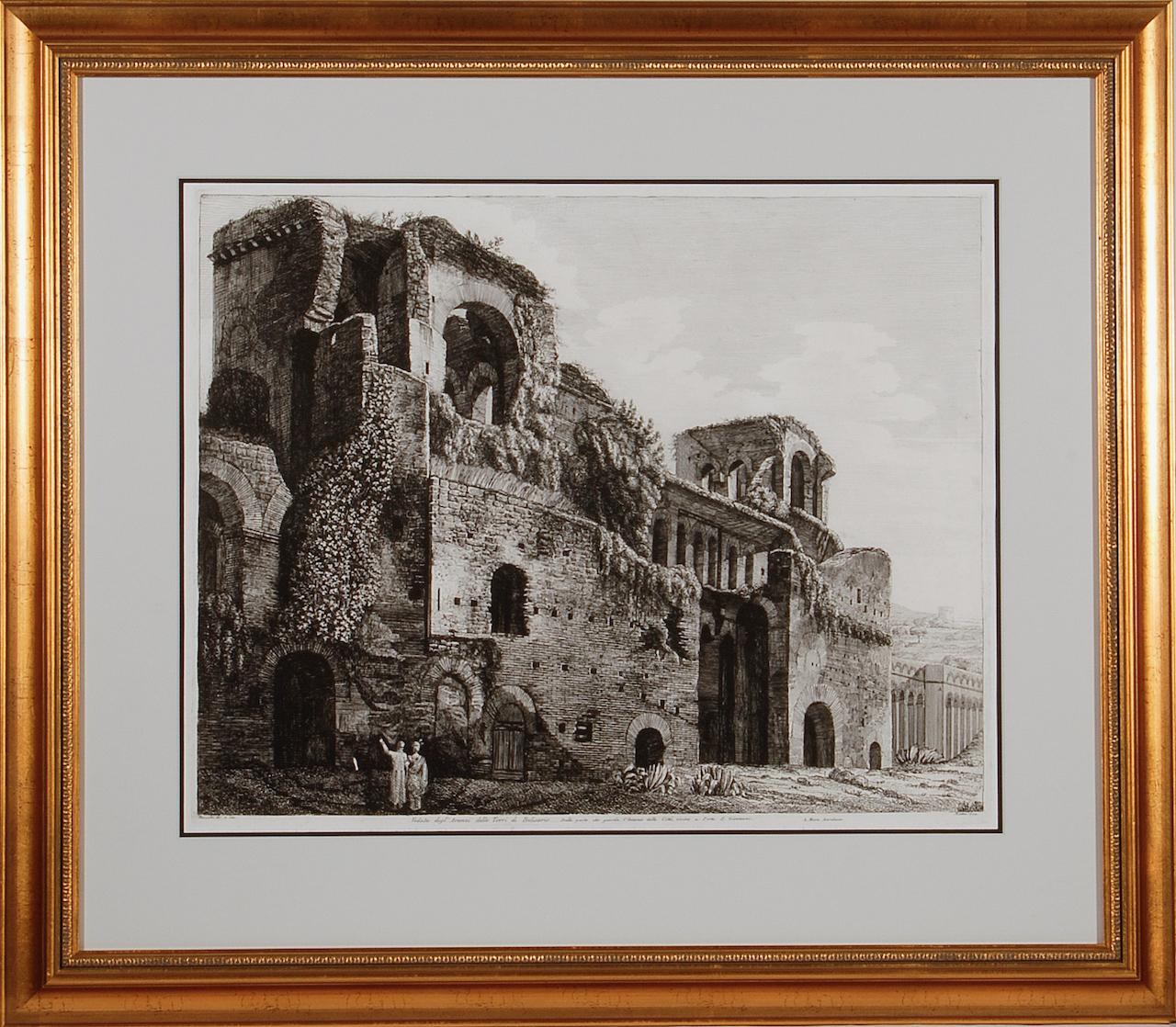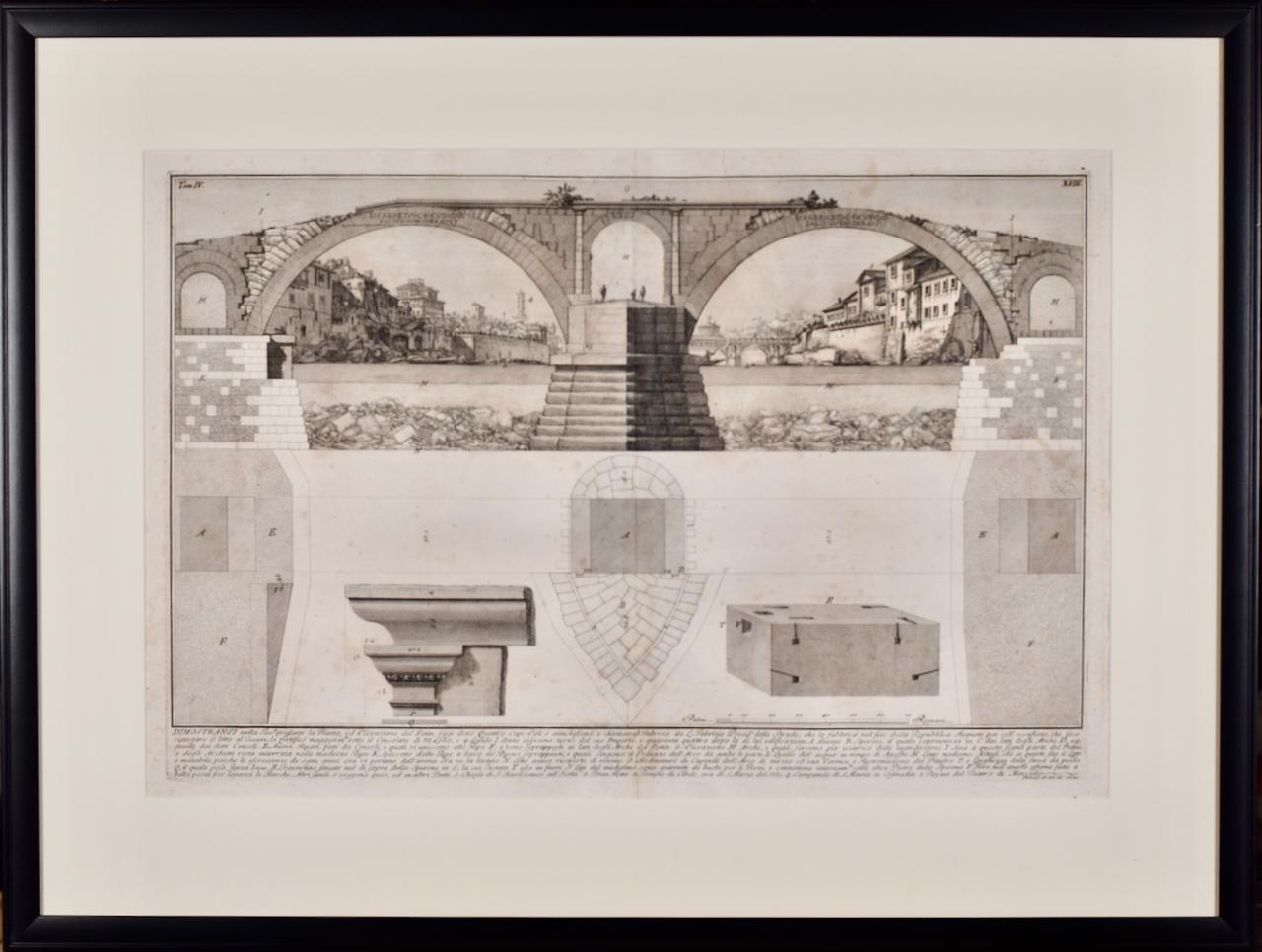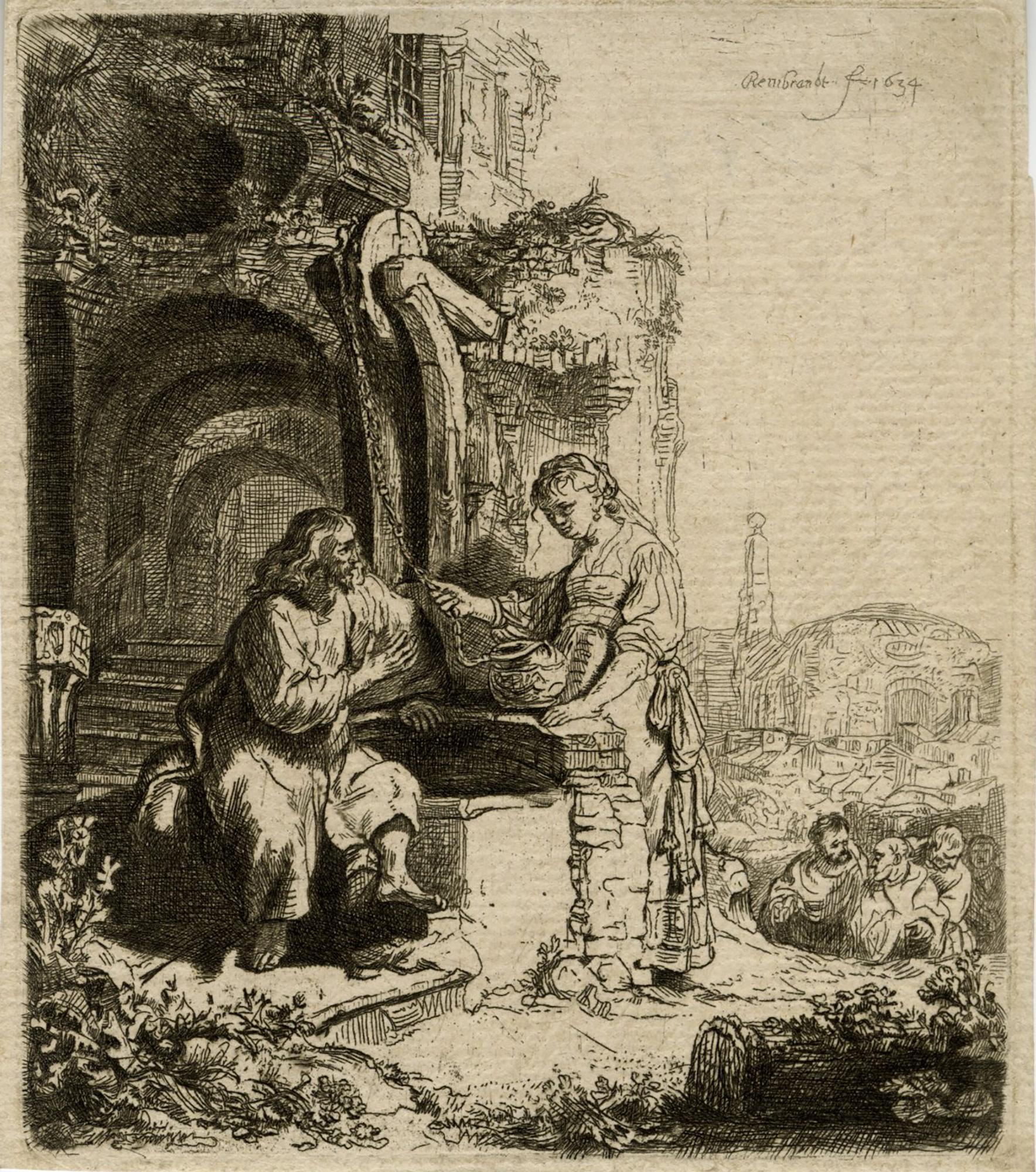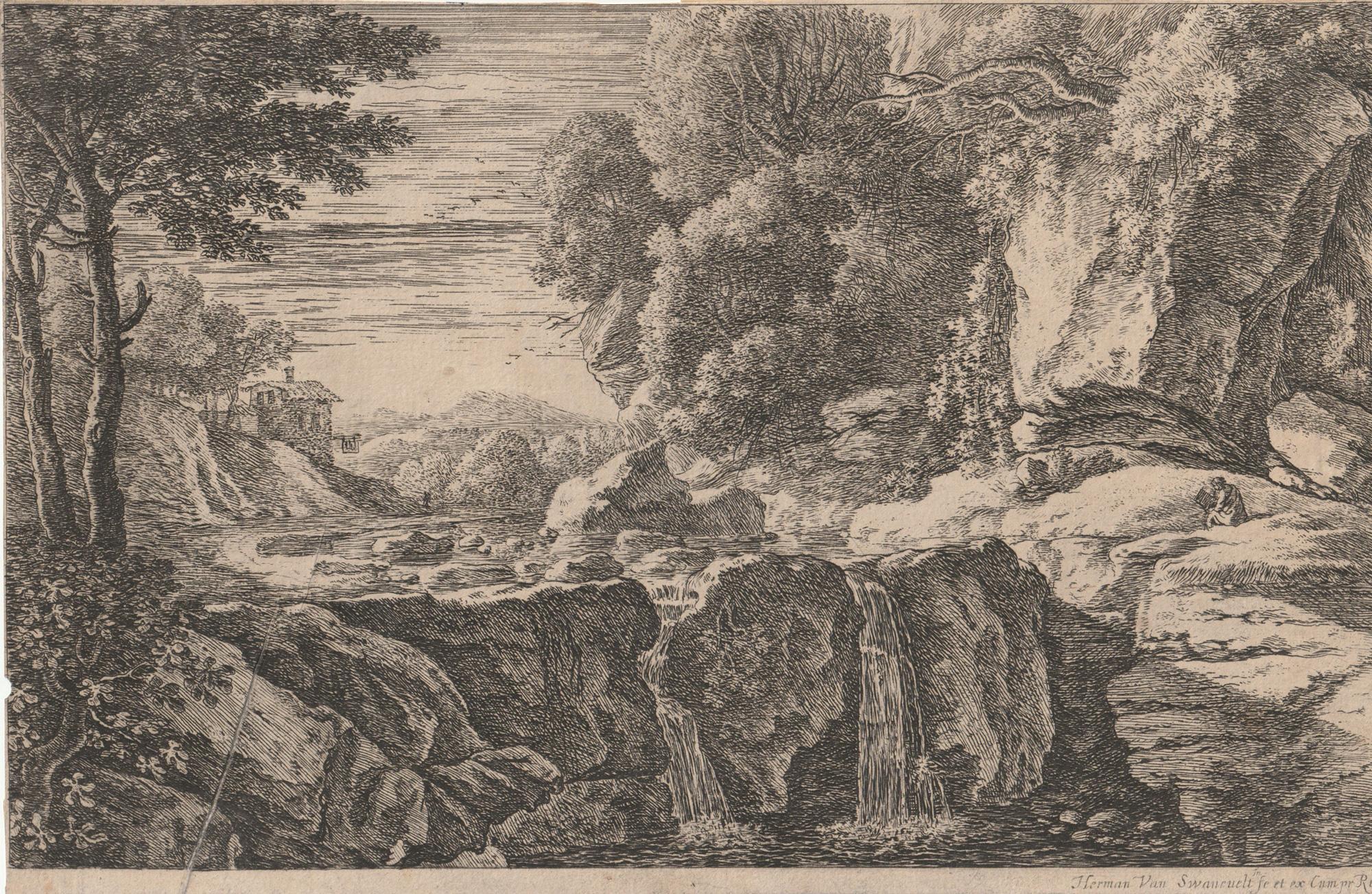Items Similar to Pompeian Style Tragedy Masks - Etching - 18th Century
Want more images or videos?
Request additional images or videos from the seller
1 of 2
UnknownPompeian Style Tragedy Masks - Etching - 18th CenturyLate 18th Century
Late 18th Century
About the Item
Pompeian Style Tragedy Masks from "Antiquities of Herculaneum" is an etching on paper realized by Various Authors in the 18th Century.
Monogrammed on the plate.
Good conditions with some folding.
The etching belongs to the print suite “Antiquities of Herculaneum Exposed” (original title: “Le Antichità di Ercolano Esposte”), an eight-volume volume of engravings of the finds from the excavation of the ruins of Herculaneum in the Kingdom of Naples (now Campania, Italy).
It was published between 1757 and 1792 by the Regia Stamperia, and copies were delivered to selected recipients across Europe.
Despite the title, the Antiquity of Herculaneum shows objects from all the excavations undertaken by the Bourbons in the Gulf of Naples. These include Pompeii, Stabia and two sites of Herculaneum: Resina and Portici.
The Bourbon King Carlo appointed fifteen scholars creating a new “Herculaneum Academy” to study the artifacts and publish the results of the archaeological excavations of the sites.
The engravings are of high quality and the accompanying text shows a large scholarship.
They were realized by 25 prominent artists involved by the King to prepare drawings and engravings on the finds, among which we can find Giovanni Elia Morghen, Carlo Nolli, Luigi Vanvitelli, and Giovanni Battista Casanova.
The “Antiquities” was designed more to amaze readers with the quality of the objects in the collection of the King of Naples than to be used in research., following and increasing the interest of 18th-century society for the classical culture and Art in particular.
Through the exaltation of the classical concept of proportions and harmony, the book was of inspiration to the neoclassical movement in Europe, giving artists and decorators access to a huge shop of Hellenistic motifs.
- Creation Year:Late 18th Century
- Dimensions:Height: 3.75 in (9.5 cm)Width: 6.3 in (16 cm)Depth: 0.04 in (1 mm)
- Medium:
- Movement & Style:
- Period:
- Framing:Framing Options Available
- Condition:Insurance may be requested by customers as additional service, contact us for more information.
- Gallery Location:Roma, IT
- Reference Number:
About the Seller
4.9
Platinum Seller
These expertly vetted sellers are 1stDibs' most experienced sellers and are rated highest by our customers.
1stDibs seller since 2017
6,749 sales on 1stDibs
Typical response time: 2 hours
- ShippingRetrieving quote...Ships From: Grasse, France
- Return PolicyA return for this item may be initiated within 14 days of delivery.
More From This SellerView All
- Collegio De Neofiti - Etching by Giuseppe Vasi - Late 18th CenturyBy Giuseppe VasiLocated in Roma, ITCollegio De Neofiti is an original black and white etching of the Late 18th century realized by Giuseppe Vasi. Signed and titled on plate lower margin. Good conditions and aged mar...Category
Late 18th Century Old Masters Figurative Prints
MaterialsEtching
- Monastero e Chiesa di S. Apollonia-Etching by Giuseppe Vasi-Late 18th CenturyBy Giuseppe VasiLocated in Roma, ITMonastero e Chiesa di S. Apollonia is an original black and white etching of the Late 18th century realized by Giuseppe Vasi. The beautiful etching represents a glimpse of Rome. Si...Category
Late 18th Century Old Masters Figurative Prints
MaterialsEtching
- Giardino e Casino Pontificio - Etching by Giuseppe Vasi - Late 18th CenturyBy Giuseppe VasiLocated in Roma, ITGiardino e Casino Pontificio is an original black and white etching of the Late 18th century realized by Giuseppe Vasi. The beautiful etching represents a glimpse of Rome. Signed ...Category
Late 18th Century Old Masters Figurative Prints
MaterialsEtching
- Archiginnasio della Sapienza - Etching by Giuseppe Vasi - Late 18th CenturyBy Giuseppe VasiLocated in Roma, ITArchiginnasio della Sapienza is an original black and white etching of the Late 18th century realized by Giuseppe Vasi. The beautiful etching represents a glimpse of Rome. Signed ...Category
Late 18th Century Old Masters Figurative Prints
MaterialsEtching
- Fianco della Strada Giulia - Etching by Giuseppe Vasi - Late 18th CenturyBy Giuseppe VasiLocated in Roma, ITFianco della Strada Giulia della Parte del Tevere is an original black and white etching of the Late 18th century realized by Giuseppe Vasi. The beautiful etching represents a glimp...Category
Late 18th Century Old Masters Figurative Prints
MaterialsEtching
- Fontana dell'Acqua Felice - Etching by Giuseppe Vasi - Late 18th CenturyBy Giuseppe VasiLocated in Roma, ITFontana dell'Acqua Felice is an original black and white etching of the Late 18th century realized by Giuseppe Vasi. The beautiful etching represents a glimpse of Rome. Signed and...Category
Late 18th Century Old Masters Figurative Prints
MaterialsEtching
You May Also Like
- Ruins of the Roman Baths of Belisarius: A 19th C. Etching by Luigi RossiniBy Luigi RossiniLocated in Alamo, CAThis early 19th century etching entitled "Veduta degl' Avanzi delle Torri di Belisario Dalla parte che guarda l' Interno della Città, vicino a Porta S. Giovanni, A. Mura Aureliane" (...Category
1820s Old Masters Landscape Prints
MaterialsEtching
- Fabricius (Ponte Cestio) Bridge : Framed 18th C. Piranesi Architectural EtchingBy Giovanni Battista PiranesiLocated in Alamo, CAThis framed 18th century etching by Giovanni Battista Piranesi is entitled "Dimostransi nella Tav. presente la Pianta, ed Elevazione del Ponte, oggi detto Quattro Capi egli è antichissimo, e chiamavasi Fabrizio da L. Fabrizio Presid. delle Strade, che lo fabbrico' nel fine della Repubblica. "(The Plan and Elevation of the Bridge, today called Quattro Capi. The architect is very ancient, and was called Fabrizio da L. Fabrizio Presid. delle Strade, who built it at the end of the Republic). This is plate 18 in volume 4 of Piranesi's "Le antichita romane opera di Giambatista Piranesi architetto veneziano" (Roman antiquities by Giambatista Piranesi Venetian architect). It was published in Rome in 1756-1757. This etching depicts the plan and elevation of the bridge now called the Ponte dei Quattoro Capi or Ponte Cestio (Bridge of the Four Heads), which in antiquity was called the Bridge of Fabricius after L. Fabricius, the Superintendant of the Streets who built it at the end of the Republic, around 62 BC. It was also been known in the Middle Ages as ‘Ponte Giudeo’ (Bridge of the Jews). The bridge crossed from the left bank or northeast side of the Tiber River to Tiber Island...Category
1750s Old Masters Landscape Prints
MaterialsEtching
- Christ and the Woman of Samaria Among Ruins by James Bretherton after RembrandtBy Rembrandt van RijnLocated in Middletown, NYBretherton, James (After Rembrandt van Rijn). Christ and the Woman of Samaria Among Ruins. London: c 1775. Etching on light cream laid paper, 4 3/4...Category
18th Century Old Masters Figurative Prints
MaterialsHandmade Paper, Etching, Laid Paper
- Paysage; Azle D'AligreBy Charles-Emile JacqueLocated in Middletown, NYEtching on Chine collé mounted to cream wove paper, 3 5/8 x 5 1/8 (90 x 129 mm), full margins. With a pencil notation in the right margin on the recto (outside of image area), as we...Category
Mid-19th Century Old Masters Landscape Prints
MaterialsHandmade Paper, Etching
- L'automne, by Franz Edmond Weirotter, after van GoyenBy Jan Josefsz Van GoyenLocated in Middletown, NYEtching and engraving on cream laid paper, 11 3/4 x 8 1/8 inches (297 x 205 mm), margins trimmed. Scattered light surface soiling, minor loose handling creases, rubbed edges, and sma...Category
Mid-18th Century Old Masters Landscape Prints
MaterialsEtching, Handmade Paper, Laid Paper, Engraving
- The little waterfall (Der kleine wasserfall), from Four Landscapes.By Herman van SwaneveltLocated in Middletown, NYEtching with engraving on cream laid paper, 7 x 10 3/4 inches (184 x 273 mm), thin margins. Printing anomaly in the lower left quadrant with associated fold. Scattered handling wear...Category
Early 17th Century Old Masters Landscape Prints
MaterialsLaid Paper, Engraving, Etching
Recently Viewed
View AllMore Ways To Browse
Two Mask
Large Mask
Mask Motif
Classical Mask
Monogram Book
Rare Vintage Records
Scale Africa
Salvador Dali Signed Lithograph
Cocteau Jean
Matisse Print Color
German 1944
Antique Woodblock Print
Antique Woodblock Prints
Posters Limited Edition
Vintage Florida Art Prints
Berlin Lithograph
Stone Arch
French Prints 1900





